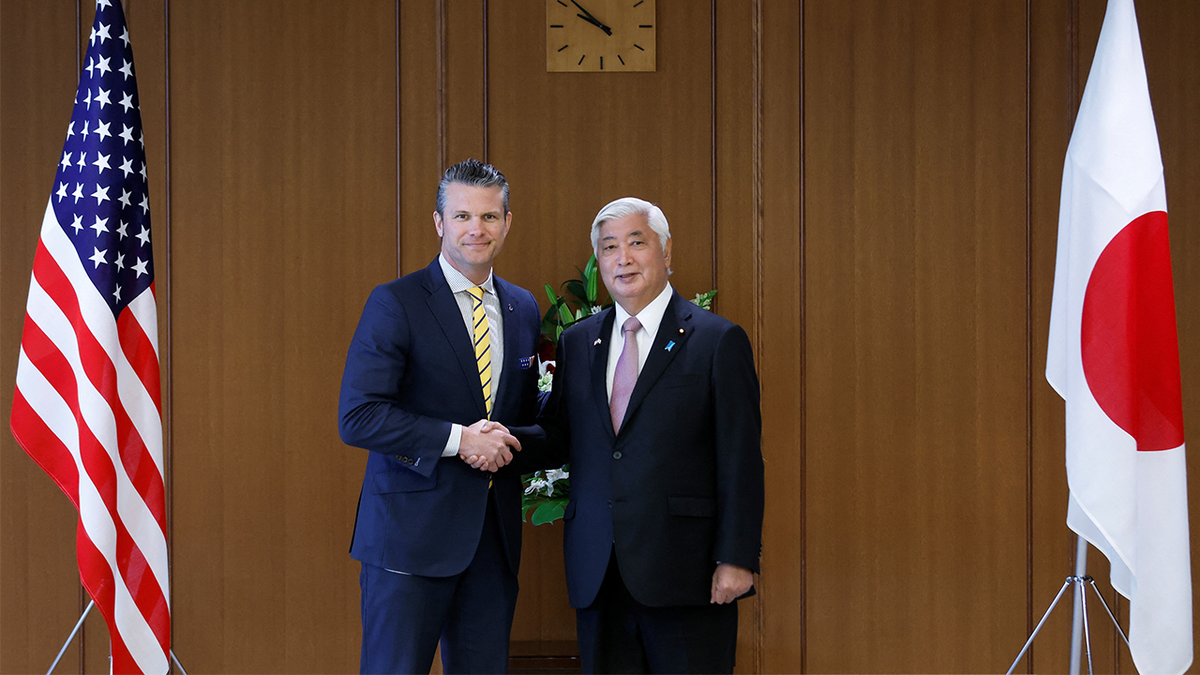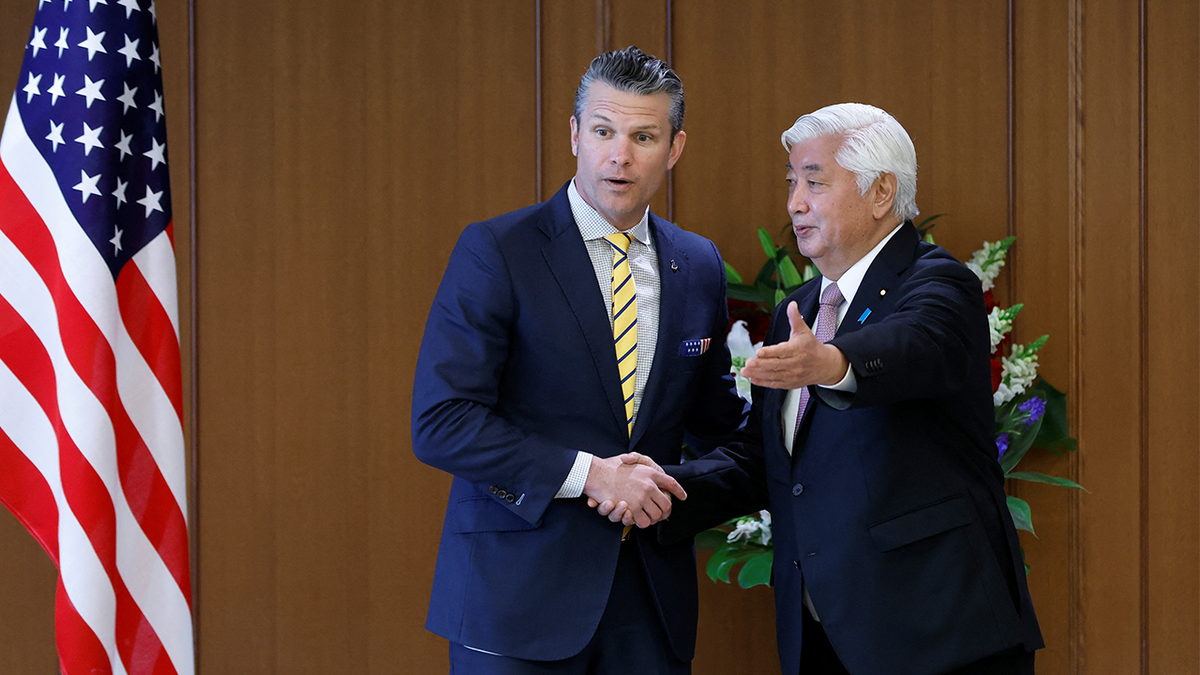U.S. Secretary of Defense Pete Hegseth announced Sunday plans to upgrade the U.S. military command in Japan, calling the country an essential ally in countering Chinese aggression.
“We share a warrior ethos that defines our forces,” Hegseth said during a meeting with Japanese Defense Minister Gen Nakatani in Tokyo. He emphasized Japan’s role as “our indispensable partner” in “deterring communist Chinese military aggression,” particularly in the Taiwan Strait.
Hegseth further described Japan as a “cornerstone of peace and security in the Indo-Pacific” and reaffirmed the Trump administration’s commitment to strengthening cooperation with the country.

Pete Hegseth, U.S. secretary of defense, and Gen Nakatani, Japan’s defense minister, shake hands while posing for photographs prior to their meeting at the Ministry of Defense in Tokyo, Japan, on Sunday, March 30, 2025. (Reuters)
Last year, then-President Joe Biden’s administration announced a major restructuring of the U.S. military command in Japan to deepen coordination with the country’s forces, as the two allied countries called China their “greatest strategic challenge.”
The change will place a combined operational commander in Japan, who would be a counterpart to the head of a joint operations command established last week by Japan’s Self-Defense Forces.
Hegseth’s high praise for Japan contrasts with his criticism of European allies in February, telling them they should not assume the U.S. presence in the region would last forever.

Pete Hegseth, U.S. secretary of defense, and Gen. Nakatani, Japan’s defense minister, meet at the Ministry of Defense in Tokyo, Japan, on Sunday, March 30, 2025. (Reuters)
Former U.S. President Donald Trump has criticized the U.S.-Japan defense treaty, arguing that it is not reciprocal. During his first term, he called on Japan to contribute more financially to hosting American troops.
Japan currently hosts 50,000 U.S. military personnel, fighter jet squadrons, and the only forward-deployed U.S. aircraft carrier strike group. These forces are stationed along Japan’s 1,900-mile East Asian archipelago, which serves as a strategic buffer against Chinese military expansion.
Amid rising regional tensions, Japan has committed to doubling its military spending, including investments in longer-range missiles. However, the operational scope of its forces remains constrained by its U.S.-authored post-World War II constitution, which renounces the right to wage war.
Officials Hegseth and Nakatani have agreed to accelerate joint production of beyond-visual-range AMRAAM air-to-air missiles and explore collaboration on SM-6 surface-to-air defense missiles to address munitions shortages, according to Nakatani.
Additionally, the U.S. has requested expanded access to Japan’s strategic southwest islands, located near the contested East China Sea and Taiwan.
Hegseth, during his first official visit to Asia, traveled to Japan from the Philippines. On Saturday, he attended a memorial service on Iwo Jima, marking 80 years since the battle between U.S. and Japanese forces.
Reuters contributed to this report.


